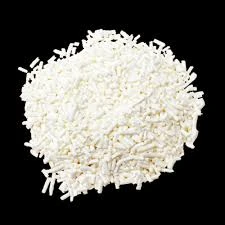
Exploring the Benefits and Uses of 635 Flavor Enhancer in Culinary Applications
The Fascinating World of 635 Flavour Enhancer
In the realm of food science, flavor enhancers play a vital role in the creation of palatable and satisfying culinary experiences. One such enhancer, known as 635 flavor enhancer, has garnered significant attention in the food industry. But what exactly is this compound, and how does it impact the foods we consume?
At its core, the 635 flavor enhancer is comprised primarily of disodium 5'-ribonucleotide, which is produced through the fermentation of microorganisms. This compound is commonly used in conjunction with monosodium glutamate (MSG), acting synergistically to elevate the overall taste profile of various dishes. This combination creates a depth of flavor that appeals to consumers, enhancing the umami taste that is so often sought after in savory foods.
Umami, recognized as one of the five basic tastes alongside sweet, sour, bitter, and salty, is characterized by a pleasant savoriness. The 635 flavor enhancer amplifies this taste, making it a popular additive in processed foods, snacks, soups, and sauces. Its ability to enhance flavor makes it a favored ingredient among chefs and food manufacturers, who seek to provide rich and satisfying experiences for their customers.
Despite its benefits, the use of flavor enhancers like 635 has sparked a debate regarding health and dietary choices. Some consumers are concerned about potential allergic reactions or adverse health effects associated with additives in their food. However, the scientific community has generally deemed flavor enhancers, including 635, as safe for consumption when used in appropriate amounts. Regulatory bodies, such as the European Food Safety Authority (EFSA) and the U.S. Food and Drug Administration (FDA), have approved these additives, suggesting they pose no significant health risks.
635 flavour enhancer

Yet, the controversy remains. Many consumers today are increasingly interested in natural ingredients and are wary of synthetic additives in their foods. This shift in consumer preferences has prompted food manufacturers to reevaluate their ingredient lists, seeking to balance flavor enhancement with a natural approach. As a result, products containing 635 flavor enhancer may become less common, as brands explore alternatives that appeal to consumers seeking transparency and health-conscious options.
Another factor influencing the conversation surrounding flavor enhancers like 635 is the growing awareness of food allergies and sensitivities. For some individuals, consuming products with artificial additives may lead to undesirable reactions, thus prompting manufacturers to develop products that cater to these dietary restrictions. This trend indicates a broader movement towards clean eating, where simplicity in ingredient lists is prioritized.
In addition to ethical and health considerations, the flavor enhancement industry is embracing technological innovations. Advances in food science have led to the development of new, natural methods for enhancing flavor without relying on synthetic additives. Ingredients like yeast extracts, herbs, and spices are being harnessed to provide robust flavors while adhering to clean-label standards. This evolution is transforming the landscape of flavor enhancement, offering consumers more choices that align with their values.
In conclusion, the 635 flavor enhancer illustrates the complex interplay between science, taste, and consumer preferences in the food industry. While it has established a reputation as a valuable tool for enhancing flavor, the growing demand for natural and transparent food options poses new challenges and opportunities for food manufacturers. As we continue to navigate the world of flavor enhancers, a balance between flavor enhancement and health consciousness will be essential in meeting the diverse needs of consumers. Whether utilizing synthetic additives or exploring natural alternatives, the quest for taste continues to drive innovation and creativity in the culinary arts.
-
Pure Sodium Dichloroisocyanurate Dihydrate | Powerful DisinfectantNewsAug.29,2025
-
Industrial Chemicals: Quality & Purity for Every IndustryNewsAug.28,2025
-
Nitrile Rubber Honoring Strict Production StandardsNewsAug.22,2025
-
Aspartame Ingredients Honoring Food Safety ValuesNewsAug.22,2025
-
Fertilizer for Balanced Plant NutritionNewsAug.22,2025
-
Cyanide Gold Processing with High Purity AdditivesNewsAug.22,2025
-
Formic Acid in Textile Dyeing ApplicationsNewsAug.22,2025
Hebei Tenger Chemical Technology Co., Ltd. focuses on the chemical industry and is committed to the export service of chemical raw materials.
-

view more DiethanolisopropanolamineIn the ever-growing field of chemical solutions, diethanolisopropanolamine (DEIPA) stands out as a versatile and important compound. Due to its unique chemical structure and properties, DEIPA is of interest to various industries including construction, personal care, and agriculture. -

view more TriisopropanolamineTriisopropanolamine (TIPA) alkanol amine substance, is a kind of alcohol amine compound with amino and alcohol hydroxyl, and because of its molecules contains both amino and hydroxyl. -

view more Tetramethyl Thiuram DisulfideTetramethyl thiuram disulfide, also known as TMTD, is a white to light-yellow powder with a distinct sulfur-like odor. It is soluble in organic solvents such as benzene, acetone, and ethyl acetate, making it highly versatile for use in different formulations. TMTD is known for its excellent vulcanization acceleration properties, which makes it a key ingredient in the production of rubber products. Additionally, it acts as an effective fungicide and bactericide, making it valuable in agricultural applications. Its high purity and stability ensure consistent performance, making it a preferred choice for manufacturers across various industries.





